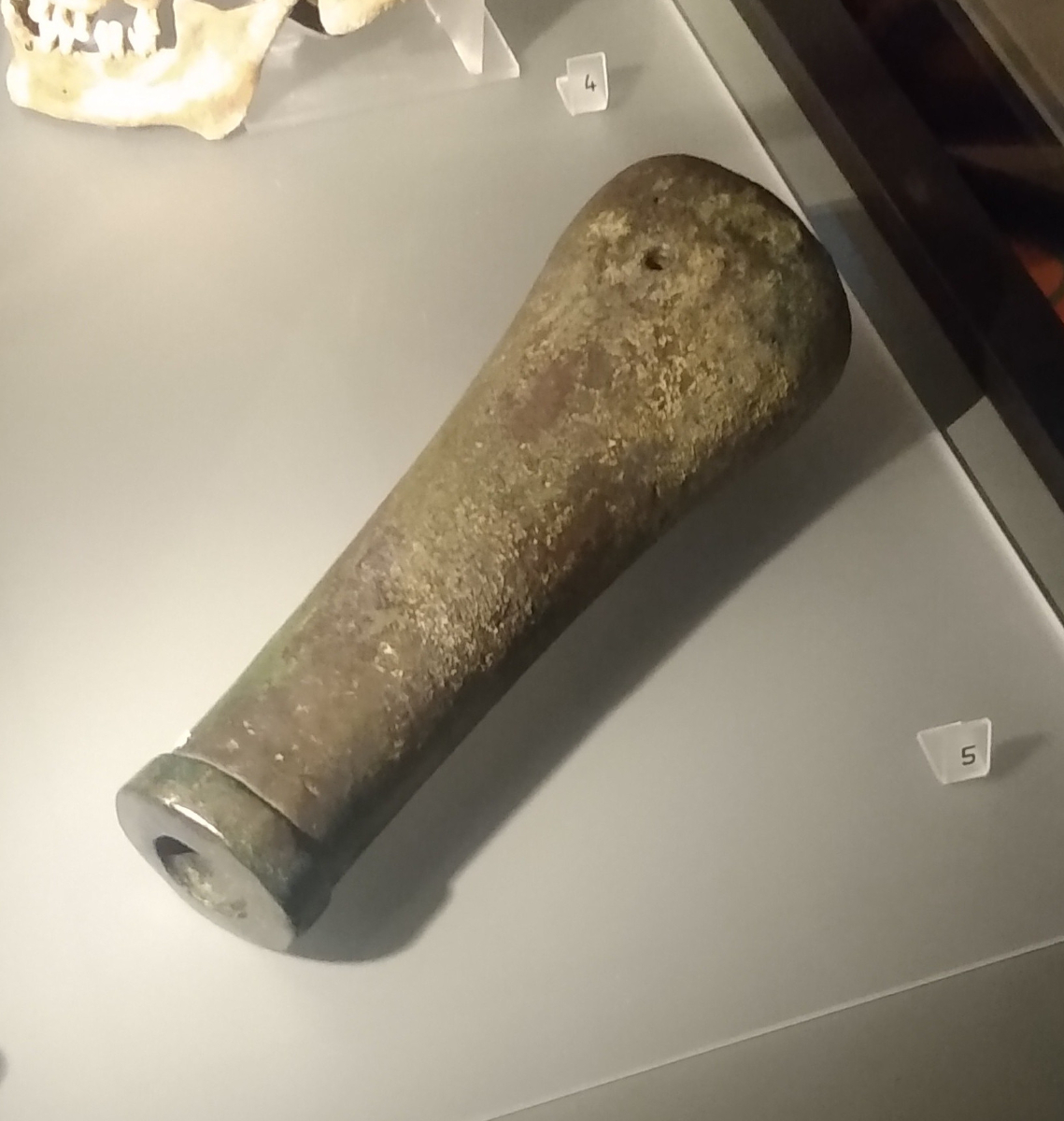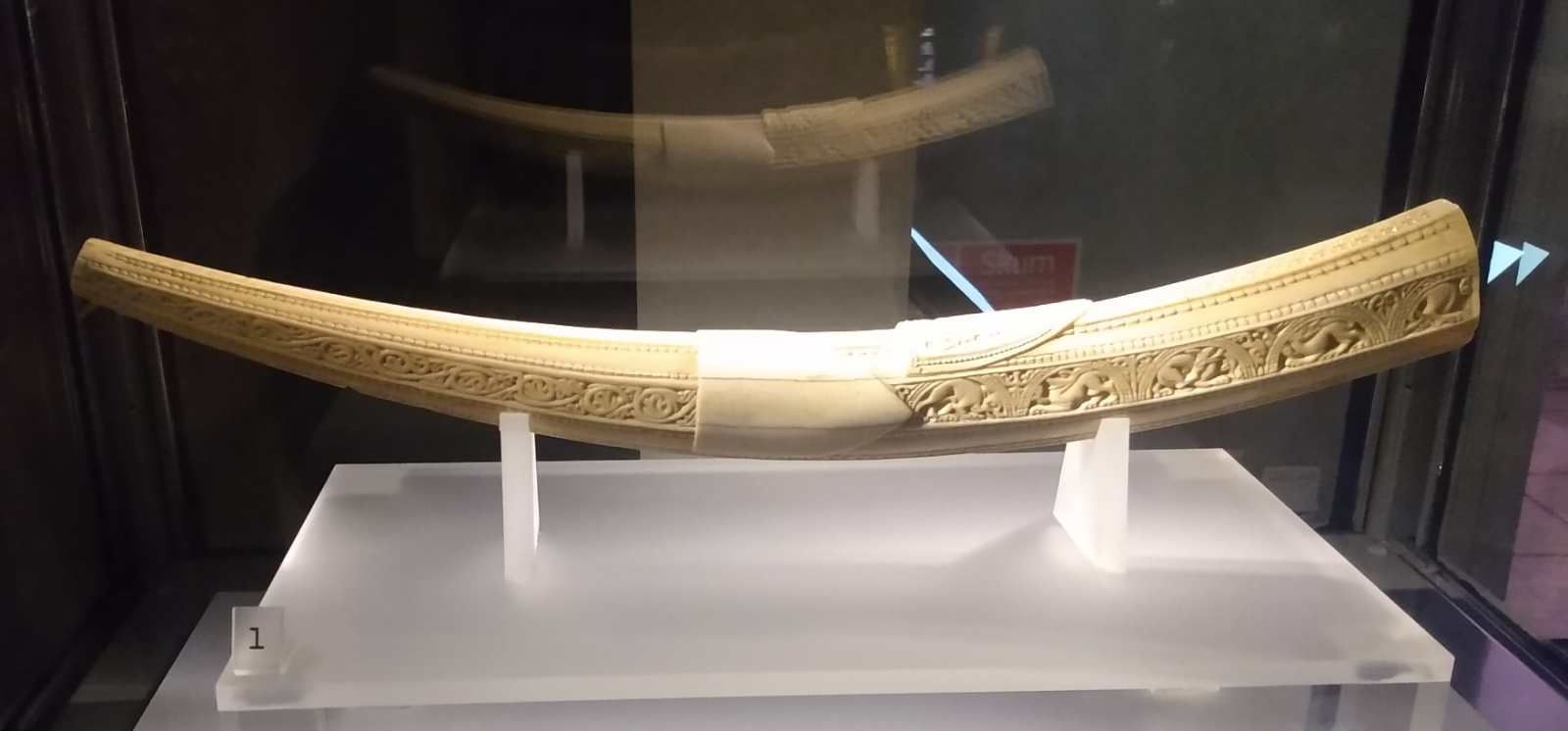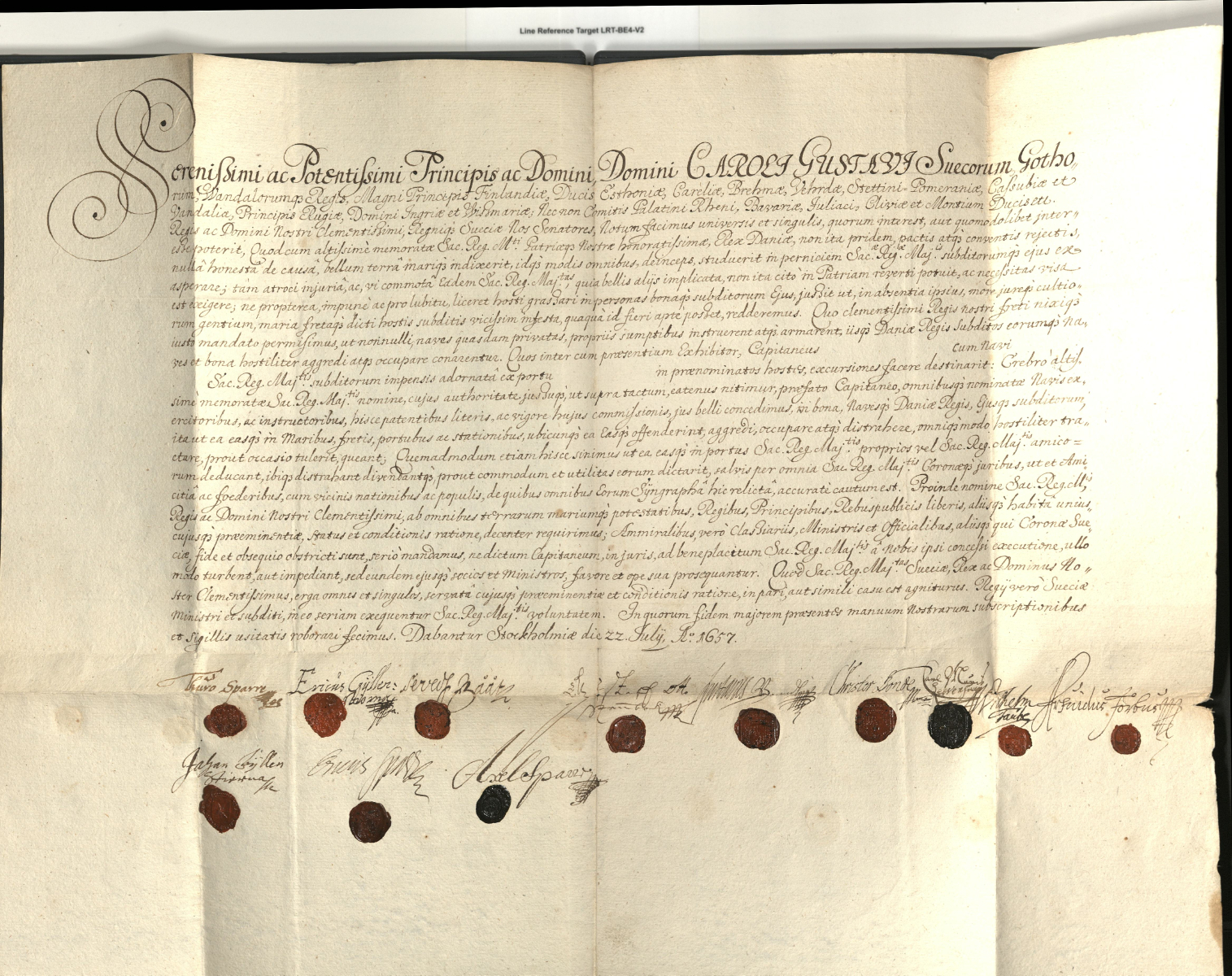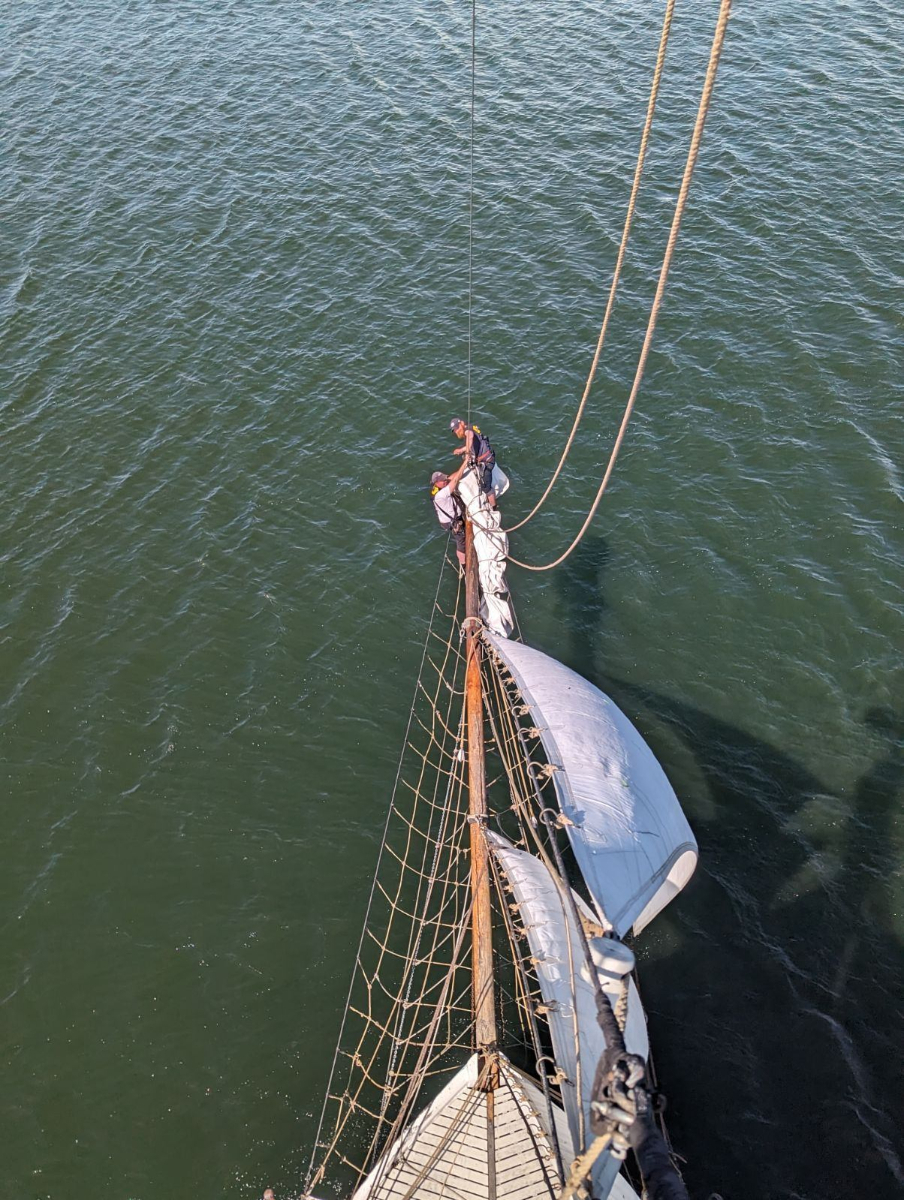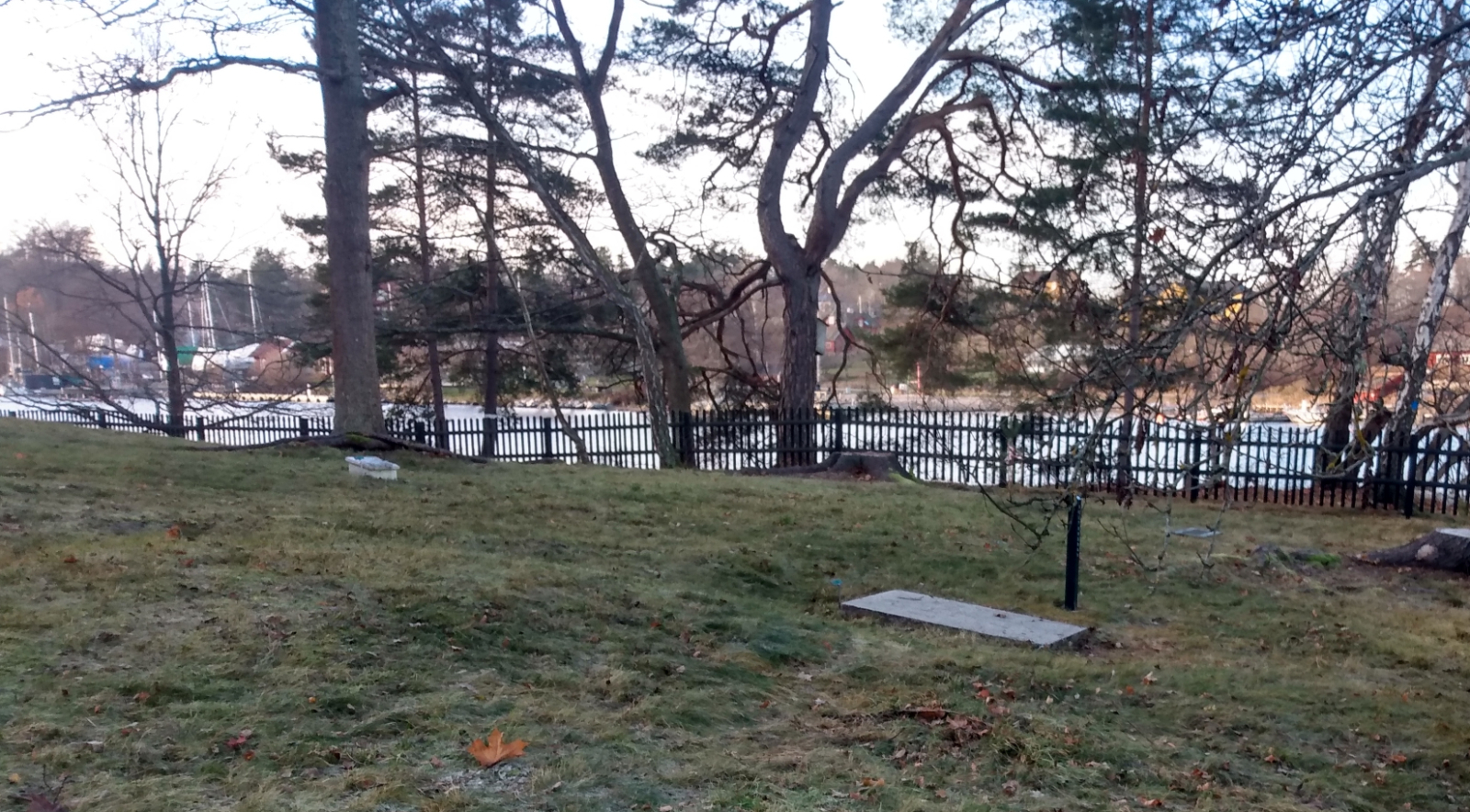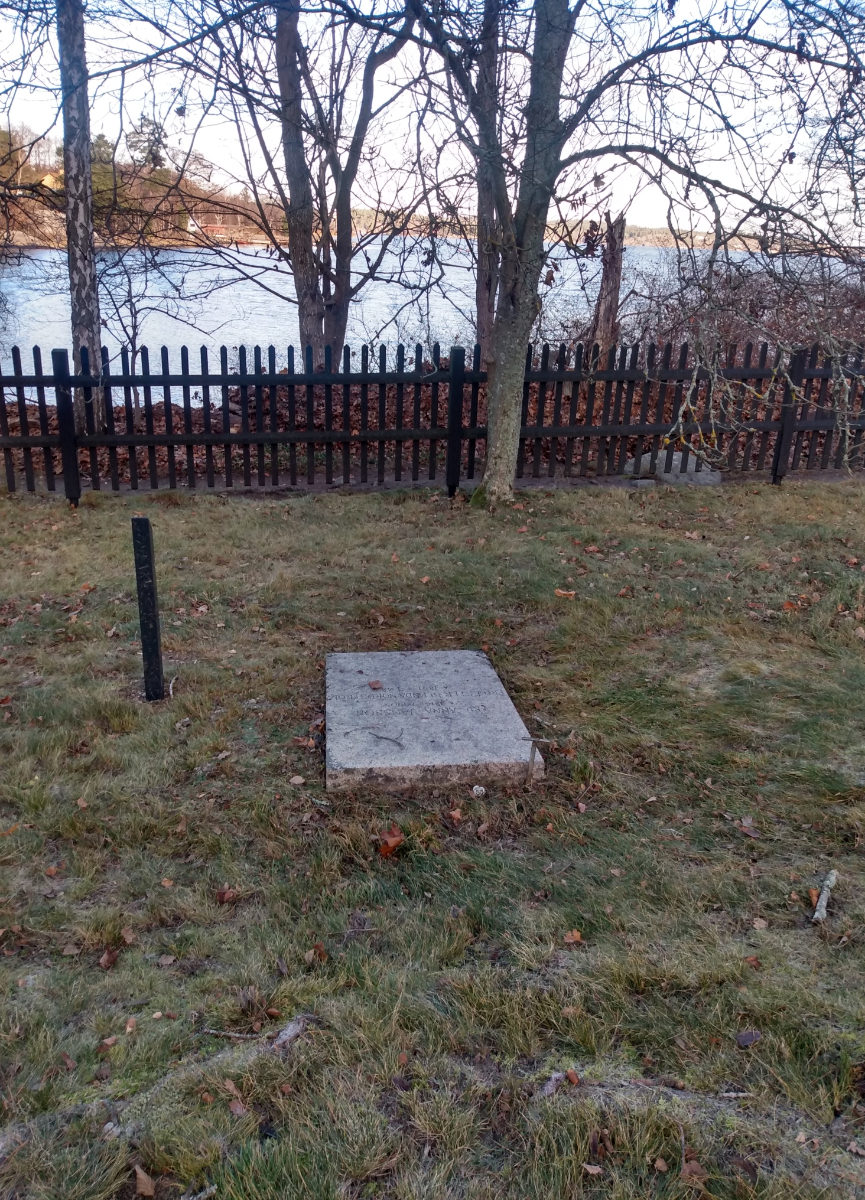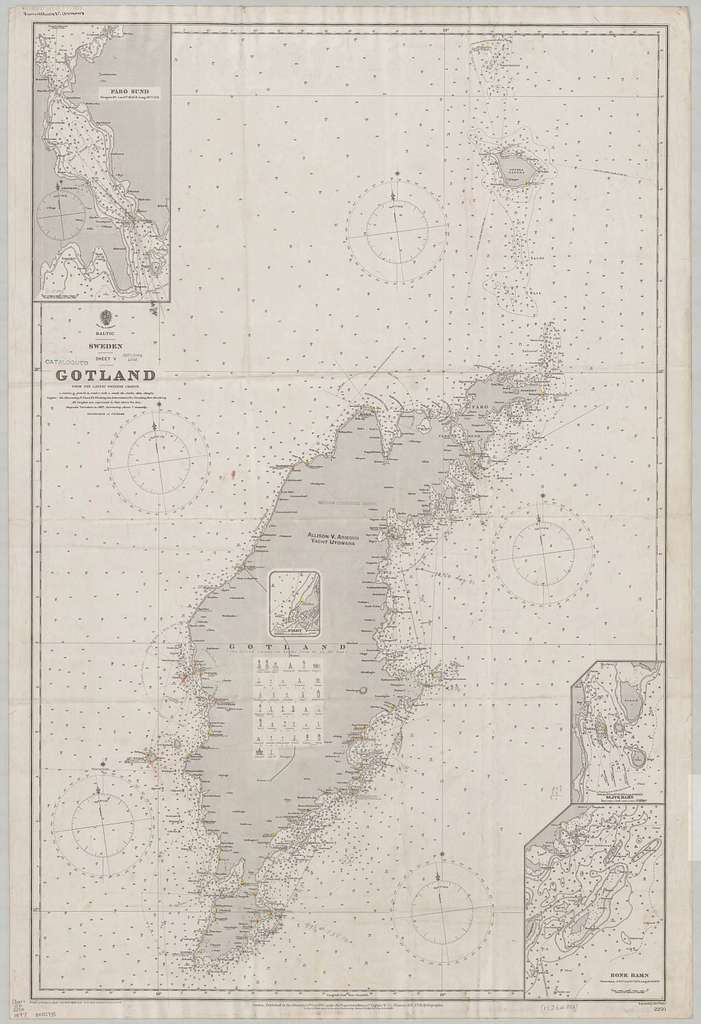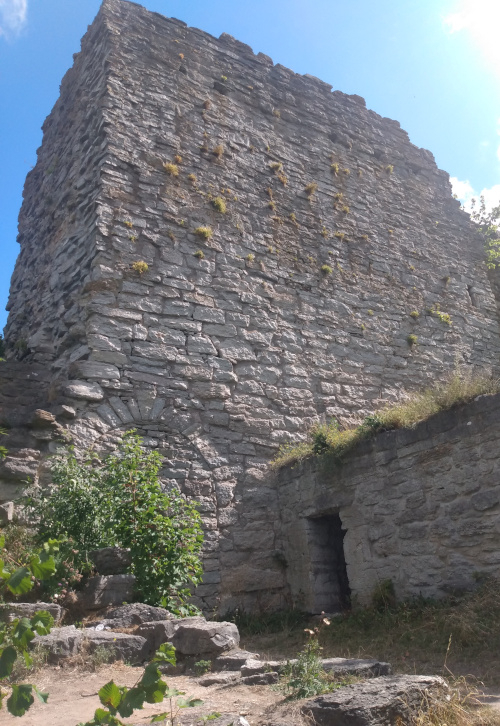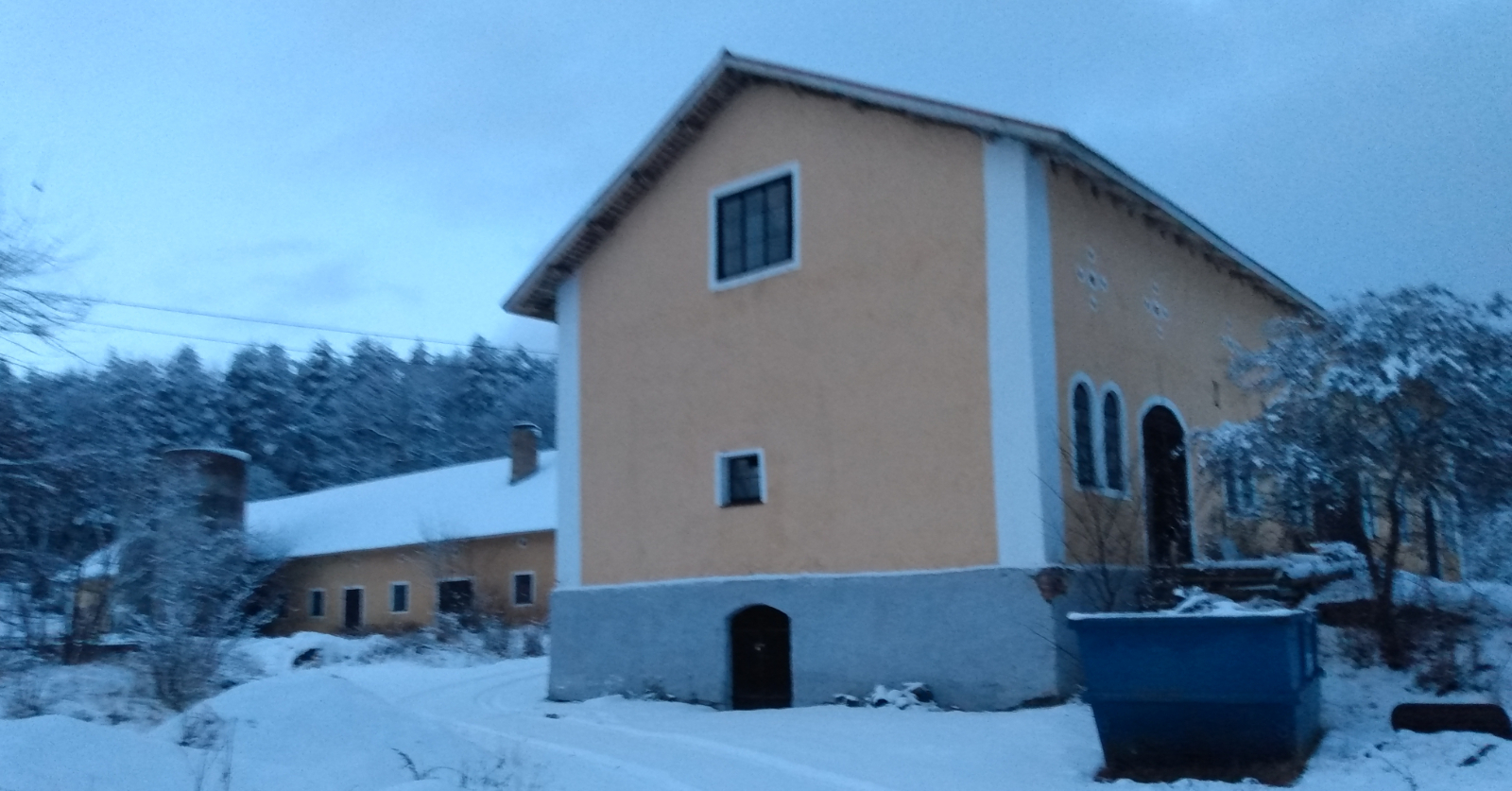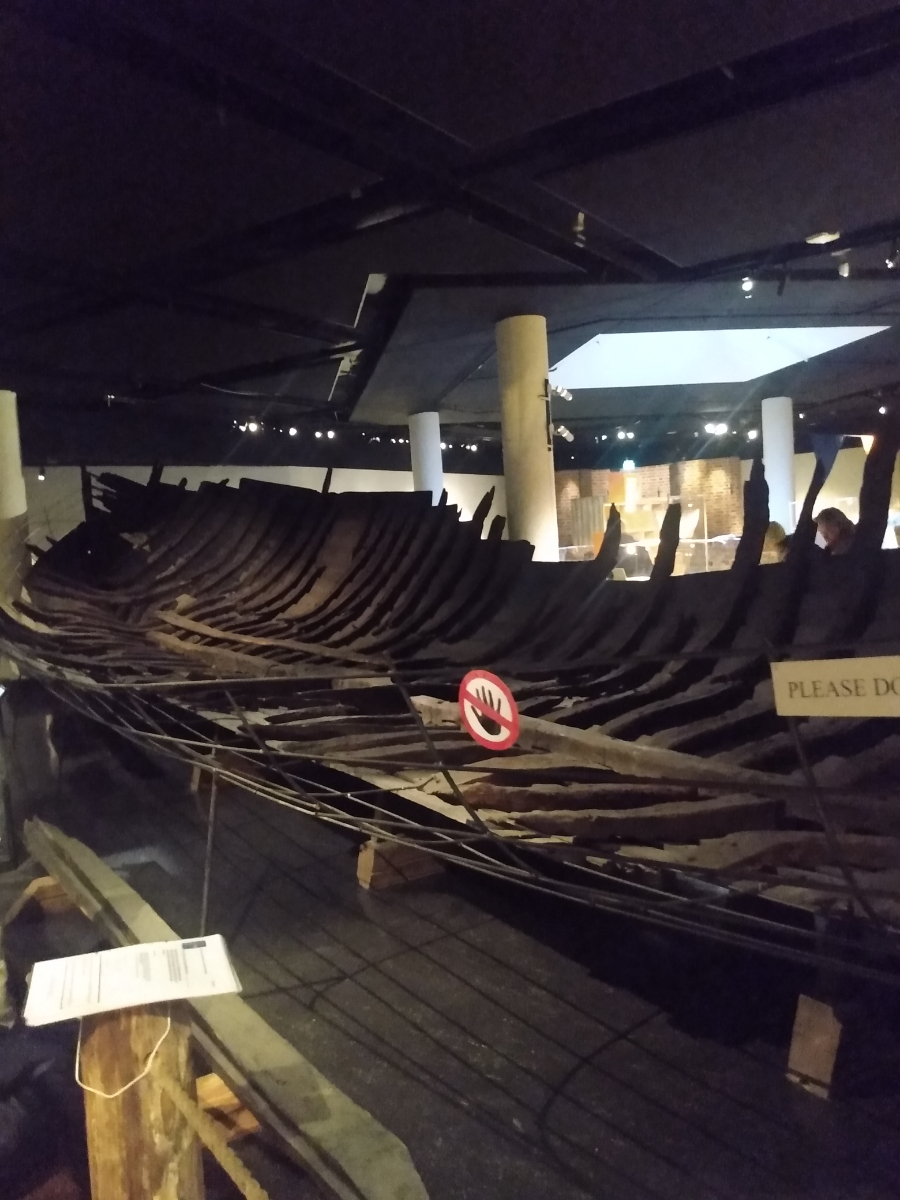-
Posts
7 -
Joined
-
Last visited
Profile Information
-
Gender
Male
-
Location
Stockholm
-
Interests
Used to be a member back when, but with a now defunct e-mailadress...
Marine mechanic with decades long pirate interest.
Recent Profile Visitors
The recent visitors block is disabled and is not being shown to other users.
-
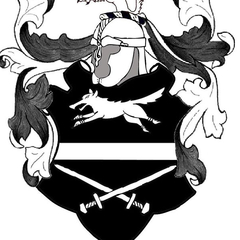
Piracy in the Baltic and North Seas
Bräckvattenspirat replied to Bräckvattenspirat's topic in Captain Twill
I think I will continue with just posting photos from my photo album and explain what we see. I'll start with the stuff that have shorter stories, so I don't have to write entire essays. A few weeks ago we went to the Historic Museum here in Stockholm with the family. The Historic Museum covers Swedens history up until about 1523. The rather odd date is because the de facto break with the so called Kalmar Union took place in that year. Anyhow, I thought I would share two photos from that Museum. The first is what is probably one of the oldest cannons/guns in existence. It is called the Loshult gun/cannon. It is believed to be as old as the first half of the 14th century. But since it was found without other archaeological context around it, and since there is no organic matter to do c14 dating, it is dated by comparing it with the Milemete document from 1326. The only gun from that era that have been possible to date properly, that I know of, is also located here in Sweden, and it is the Marstrand gun. that one I have not seen yet, but I plan to remedy that next time I'm going to the west coast. For more info on the Marstrand gun, see here: https://www.tandfonline.com/doi/full/10.1080/00253359.2023.2225311 The other picture is a hunting horn, made out of a walrus tusk. It was owned by the Swedish, Danish and Norwegian king Erik of Pomerania. In 1396 he was elected King in Sweden, after he had been King in both Denmark and Norway for a few years. Thus he was the first king in what became known as the Kalmar Union, where all three kingdoms were united under one king. It was not a peaceful reign of Erik and in 1439 he was deposed for the third and last time as king. He then fled to the island of Gotland and the castle of Visborg, located in the city of Visby, where he turned to piracy with the remains of his fleet. He had a successful career as a pirate/ship owner until 1449 when the pressure became to high and he fled to Pomerania. -
I've been looking into piracy through the ages here in Scandinavia for a while, and thought I would share a bit of what I find while doing so. One of the things I've been up to in the last six months is trying to figure out heads or tails of the archive of privateering in the Swedish National Archives. There are actually several of those, but there is one main archive, but it is not in a very good order. It is mainly sectioned up in years between somewhere around 1600 up until 1825. It takes up 2,5 meters of shelf space and consists of 27 volumes. Only parts of it have archive lists that cover it. To make things worse. Much of the early stuff is in several different languages such as German, Dutch, Latin or Polish since much of it is complains about wrongfully, according to those complaining, taken prizes. But I did find a real gem in one of the earliest volumes. What could be called the master copy of the Swedish Letter of Marques from July 1657. One month earlier, June 1 1657, Denmark declared war on Sweden and Sweden were already at war with Russia and Poland. So this Letter of Marque would be signed by King Karl X Gustaf in the wars against Russia, Poland and Denmark. The thing is that there are extremely few Swedish Letters of Marque that have survived to this day. This one is the first that I have ever seen.
-

Travel destinations tied to historical piracy?
Bräckvattenspirat replied to Mission's topic in Ports O'Call
I think I will take you up on that offer to share more of what I find. But to not ending up hijacking this thread I will start a new one in the Captain Twill section. 🙂 But not until I share this photo taken from the main mast of Constantia of me and my friend Per fixing something out on the bowsprit last summer. I honestly don't remember what it was. -

Travel destinations tied to historical piracy?
Bräckvattenspirat replied to Mission's topic in Ports O'Call
I thought I would follow up on the last post. I while ago I stumbled upon someone called "the last pirate on the Baltic Sea". While reading up on him I remembered reading about him back in the early 00's or late 90's. The reason I did not dig deeper back then is that he was in the grey area that some call piracy and some don't. He was a wrecker on the Island of Gotska Sandön in the early 1800's. Local legends have painted him out as both serial killer and someone who actively tricked ships to wreck. Neither of these things check out when you look into them. What rather seem to be the case, I have still to do more research but the major things seem clear, is that he worked as a caretaker at the Island Gotska Sandön in 1814. Gotska Sandön is located about 40 km north of the Island Gotland in the Baltic sea(I post a map of Gotland with Gotska Sandön visible at the top) and is still mostly uninhabited. During the fall and winter back in the early 1800's there were only the caretaker and his family there. In October of 1814 two ships collided in the Baltic somewhere of the coast of Gotland. One of the ships, Cerberus av Greifswald, were abandoned and set adrift. It got wrecked on the shores of Gotska Sandön. Petter Gottberg found her there some time prior to Christmas 1814. He started looting the ship. In May of 1815 relatives of his wife came to visit, and he had to report the wreck to the authorities. And the rest of the wreck was salvaged by the government. A while later he went on a visit to Stockholm, where he sold some of the goods from the wreck. One of the wolf skin coats he sold were recognised and he was arrested. In December 1816 he was sentenced for the wrecking and had to spend two years in jail. That was about it. Not that much actually. But local folklore have painted him into a pirate and a monster, which is what makes him interesting. In 1829 he moved to the area Boo outside Stockholm and died there in 1831. Today I visited the cemetery where he was buried, Boo Gamla Kyrkogård, to see if there was a way of finding his grave. Today it is located in one of the poshest suburbs of Stockholm, and the road there is through areas with some of the most expensive houses in Sweden. But in the early 1800's things were quite different. The area was somewhere where poor people lived and died. This was also mirrored in the cemetery. How ever, in the late 1800's things had changed, and so did the cemetery. People with more money were buried there, and more graves with headstones and crosses were created. So that was my problem. Petter Gottberg was buried in a poor mans grave, which means he had no headstone. But thanks to signs written by local historians the approximate area where he was buried were easy to find. The first two pictures are of that area in the cemetery. The third is to get a better idea of the cemetery itself and the third is a map of Gotland. I know this is not the most "piratey" and exciting of my finds, but I will post more. -
Bräckvattenspirat changed their profile photo
-
Around here in the area around the Baltic Sea and the North Sea we have quite a few ships as well. Here is a list of some of them. Pommern - Four masted barque. One of the Flying P-liners built in 1903. Have been a museum ship since after WWII. Moored next to Åland Maritime Museum. Home port: Mariehamn, Åland, Finland https://en.wikipedia.org/wiki/Pommern_(ship) af Chapman - Full-rigger built in 1888. Bought by the Swedish Navy in 1923 and used as a training ship. Gifted to the city of Stockholm in 1947 and have been used as a youth hostel since 1949. Home port: Stockholm, Sweden https://en.wikipedia.org/wiki/Af_Chapman_(ship) Suomen Joutsen - Full-rigger built in 1902. Bought by the Finnish Navy in 1930. Used as a training ship until 1991 when she was turned into a museum ship. Home port: Turku/Åbo, Finland https://en.wikipedia.org/wiki/Suomen_Joutsen Roter Teufel - Cog built in 2001. Replica of the so called "Skanörskoggen" found outside Skanör in the south of Sweden built around 1390. Sold to Västerås Historiska Skeppsmuseum in 2014. Today named after the ship sailed by the 14th century pirate Klaus Störtebeker. Home port: Västerås, Sweden https://sv.wikipedia.org/wiki/Roter_Teufel SOIC Götheborg - East Indiaman built in 2003. Replica of SOIC Götheborg that sank outside the city of Göteborg in 1745. Home port: Göteborg, Sweden https://en.wikipedia.org/wiki/Götheborg_(ship) Tre Kronor - Brig built in 2005. Copy of one of the earlier Swedish Navy training ships HMS Gladan. Future uncertain as the company running it filed for bankruptcy about a month or so ago. Home port: Stockholm, Sweden HMS Gladan - Schooner built in 1946. One of the two sailing training ships of the Swedish Navy. Home port: Karlskrona, Sweden https://sv.wikipedia.org/wiki/HMS_Gladan_(S01) HMS Falken - Schooner built in 1946. The other of the two sailing training ships of the Swedish Navy. Home port: Karlskrona, Sweden https://sv.wikipedia.org/wiki/HMS_Falken_(S02)
-

Travel destinations tied to historical piracy?
Bräckvattenspirat replied to Mission's topic in Ports O'Call
Both the North Sea and the Baltic Sea have been full of pirates and privateers since beginning of time up until the Paris Declaration in 1856. We must remember that this was a violent area. Denmark and Sweden are, depending on how you define stuff, the two countries in the world that have fought the highest amount of wars between them. Up until the 1800's Denmark and Sweden were fighting wars all the time. And most of these wars included privateering in one way or another. Sweden did not get a real navy until 1522, and it took a few decades until it was a proper navy. Denmark was a bit faster, but I'm not really sure when they got a navy. They might have been about a hundred years faster, because I seem to remember that Queen Margarete had access to a navy during her battles with the Hansa and the Victual Brotherhood. But don't quote me on it... But until the navies were established, all naval warfare was based on piracy and privateering around here. Before we had proper national states we had Vendish tribes on the southern coast of the Baltic, and prior to that of course Vikings. Once the nations started to form piracy also started to develop to privateering, even though the line was veeeery blurry between privateering and pure piracy up until the end in the 1800's. Most famous among the early pirates was the Victual Brotherhood. Originally north German pirates turned privateers, then turned pirates again, in the late 14th century early 15th century. This all means there are maaaany places around here with a connection to piracy. How ever, piracy have not been a big subject among historians of Scandinavia(except the Vikings of course), so one have to dig a bit in different books and archives before those places are found. -

Travel destinations tied to historical piracy?
Bräckvattenspirat replied to Mission's topic in Ports O'Call
Right now I'm just checking of the list here close to home. I created a city walk here in Stockholm, Sweden with all the places I found connected to our pirate history, and there are actually a few! I'm also trying to see as many other places as possible here close by. A while ago I checked out the foundry where two of the guns found on Queen Annes Revenge were made, Ehrendahls Styckebruk, a bit south of Stockholm. This summer I combined sailing with the schooner Constantia and visiting Visby, and the ruins of Visborg Castle, that was the base of Baltic pirates and privateers for over a hundred years between the late 14th century and the early 16th century. I visited the ruins of Skenäs Castle at Bråviken, where the actual pirate princess Cecilia Vasa had her base of operations in the 1560's, a while back. I made sure to see the Riddarholmen ship here at the Medieval Museum before they closed last weekend. The Riddarhomen ship was part of the privateer fleets in he Baltic sea in the 1520's, before it sank here in Stockholm. Another museum find I visited recently was the Historical Museum where they keep the hunting horn of Erik Av Pommern, Swedish king turned pirate in the 15th century. And of course Mariehamn Maritime Museum with the Jolly Roger(been there a gazillion times as a kid, since my mother is from the Turku archipelago). I am looking at re-visiting Onsala, and Onsala church, on the Swedish west coast, where Swedish pirates/privateers Lars and Ingela Gathenhielm were born and are buried in huge caskets decorated with skull and crossbones(not as a sign of piracy, but of death. But it is suiting!), pretty soon. It has been almost 20 years since I went there last time, and it's worth revisiting. Also I will make sure to see the graves of the Swedish 17th century pirates Gustaf Adolf Skytte af Duderhoff and Gustaf Drake in the close future as well. The thing is, that as I dig more and more in the Swedish archives, I keep finding new places to visit all the time. But I am planning on getting further away too. Northern Germany have a bunch of places connected to the Vitaliebrüdern/the Victual Brotherhood. London and a bunch of other British places of course. St. Malo have a couple of Swedish pirate connections too. And Ireland with all the places of Gráinne Ní Mháille. Salé/Rabat would be nice, but Tripoli and Tunis will have to wait until things calm down in the region. The US east coast, as a road trip from New England to Florida. Port Royal, and St Chatherines church in Jamaica. Tortuga will also have to wait a while for Haiti to calm down. Pictures shown. Visborg Caslte, Skenär Castle, Ehrendahls Bruk, Riddarholmsskeppet


